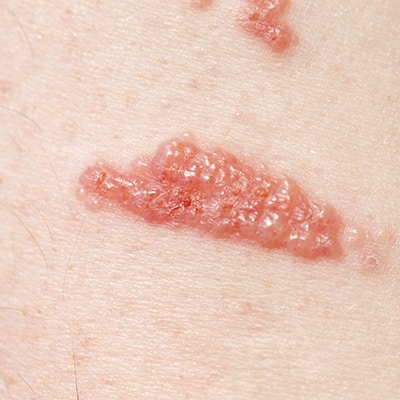
This may not be the exact look of your condition. Please confirm your diagnosis with your dermatologist.
What is it?
The rash of "poison ivy" occurs when the skin comes in contact with the leaves, stems or roots of poison ivy, poison oak or poison sumac. These surfaces contain a resin called urushiol, which causes the rash in about half of those who touch or brush against them.
Although there are almost no long-term effects in most cases, the rash that results from contact with poison ivy, poison oak or poison sumac, can be very uncomfortable and itchy. In extreme cases, swelling and infection can occur.
Symptoms?
Typical symptoms of poison ivy rash include:
Redness
Itching
Swelling
Blisters
Poison ivy rash symptoms usually appear fairly quickly – about 12 to 48 hours after contact. Symptoms may last for two to three weeks and almost always require some form of treatment, ranging from over-the-counter anti-itch cream, to topical prescription creams and even oral steroids or injections.
Once contact with the plant residue has occurred, care must be taken to ensure that it is not spread to other parts of the body through touch.
Could this be what you have?
Poison ivy, poison oak or poison sumac are typically found in wooded areas. The residue can be transferred to human skin from the plant itself, from pets who have brushed against one of the plants, and from items such as gardening gloves that have touched the plants.
Treatment Options @ Pinnacle
For mild cases of poison ivy rash where the itching is tolerable, regular, thorough cleansing of the area is in order.
For more severe cases, a prescription corticosteroid may be prescribed, either topically or systemically. See your dermatology provider if you have encountered this common contact allergen.